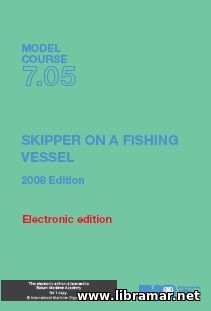 The electronic edition of the IMO Model Course 7.05. Trainees who have successfully completed the present training course and meeting the recognized performance standards will be able to determine position of their vessel together with the accuracy of the position fix using various instruments, properly plan a voyage, maintain safe navigation using ARPA and radar plus modern systems of navigation, determine compass errors, forecast weather, respond to the potential emergencies, handle and maneuver a vessel properly operate shipboard propulsion plant etc.
They will also understand the oceanographic conditions and coordinate SAR operations, be aware of the engineering systems on board, arrange watchkeeping and associated procedures etc. Traditionally, purpose of any IMO model course is to provide the maritime and fisheries training entities with required assistance concerned with organization and introduction of the new training courses; it will also be useful for the persons engaged in enhancement, update or supplementing available training courses improving their effectiveness and quality. Three main functions are covered within this document - navigation, cargo handling and stowage, and control and operation of the fishing vessels and care for the people on board.
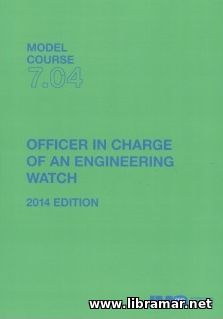 The present training course is providing the minimum competence standards for the officer-in-charge of an engineering watch on board the vessel in a manned engine room; it is also applicable to the duty engineers working in a periodically unmanned ER.
The main content of the present model course has been arranged in four major functions, addressing the marine engineering, electrical and also electronic and control engineering, issues relating to the maintenance and repair of the associated equipment, and, finally, controlling of the vessel's operation and due care for the people onboard the ship at the operational level.
Each of the functions above has been addressed in five parts from A to E. All information included in the present book was validated by the Sub-Committee on STCW to be used by the consultants, advisors and technical experts for the training, certification of the seafarers. The first section is dealing with the maintenance of the safe watch, use of the English language in both oral and written forms, and utilization of the internal communication systems, proper operation of both main and auxiliary machinery items together with their control systems, plus the operation of the fuel, ballast, lubrication and other systems together with the control arrangements.
The safety requirements, use of hand and machine tools, and due compliance with the applicable requirements are also addressed, together with many other topics.
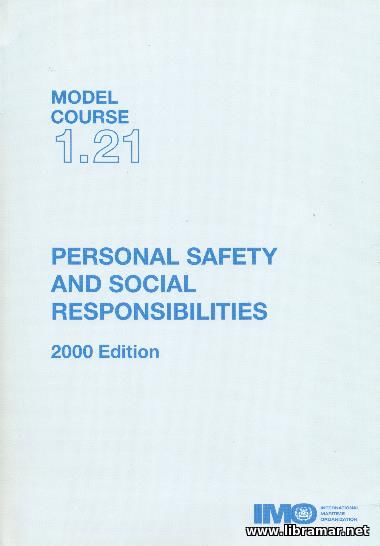 The present model course is aimed to meet the requirements for the seafarers for familiarization, basic safety training and instruction as per the A-VI/1 of the STCW Code. It has been specifically designed for preparation of the new recruits to the life and work at sea - such training has been considered necessary taking into account the different environment on a vessel as compared to the life ashore.
It is well understood that working on board a vessel can sometimes be hazardous for the uninitiated people. The intention of the course is to provide the new seafarers with the insight into the elements of a vessel together with the established working procedures so that it is much easier for them to adjust to the environment on board and to cope with any circumstances. It is hoped that this course will make the transition of the new seafarers from a shore life to a sea career go smooth and give them some required knowledge of the vessel's working before they step on board.
Trainees who have successfully completed the present course will be able to observe all safe working practices, comply with the existing emergency procedures, understand and be understood, contribute to the relationships between people etc.
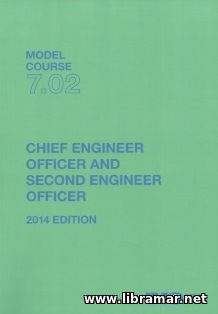 This model course coming under 7.02 number covers four functions, as detailed below. Officers who have completed the course, satisfactorily passed the associated examination and also gained the required experience in watchkeeping, will be considered prepared to take the full responsibility for the vessel's safety and safety of the passengers on board, crew members and cargo being transported.
The officers will also be fully aware of their obligations according to the requirements outlined in the international conventions and agreements related to the safety and marine environment protection. Moreover, they will be duly familiar with and prepared to take any necessary practical measures to meet these obligations. One combined training course was prepared for both second - and chief engineer officer.
The training material has been set out in a way allowing it to be run separately. As mentioned above, the content has been arranged in four functions, and these functions are the marine engineering, maintenance/repair, ship control and operation and care for the people on board, and electrical/electronic/control engineering - all dealt with at the management level. A really good and useful volume for those willing to get familiar with the arrangement of this model course, pre-requisite training and skills, scope and purpose, etc.
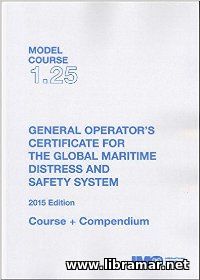 This IMO training course is covering all training recommendations as outlined in the Annex III to the IMO Assembly Res. A. 703 (17) - it has been revised in order to fully meet the updated technical requirements of the Radio Regulations 2012.
Trainees who have completed the present course and passed the prescribed exam will be able to properly operate the shipboard GMDSS equipment in the efficient manner and carry the primary responsibility to these communications at the time of the routine-, safety-, urgency- and distress incidents.
The authors of the course have decided to include some training in techniques to avoid any unintentional transmission of the false alerts, taking into account numerous very serious problems that have already been experienced in GMDSS because of the many false distress alerts. Some basic knowledge of the maritime radio communications is considered a pre-requisite to this course. The learners are also expected to have some very basic computer skills.
Every person who is performing the radio duties on board a ship or considered to be in charge, shall be a holder of a valid GMDSS certificate satisfying the applicable provisions of the Radio Regulations of the ITU. The training material contained in the present course is addressing all GMDSS aspects.
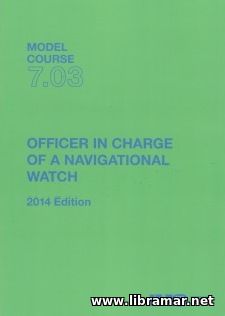 The declared objective of the present model course is to meet all minimum requirements that are mandatory and apply to the knowledge, as well as understanding and proficiency in Table A-II/1 of the STCW Convention, for three functions, namely navigation, proper handling and stowage of the cargo transported, and controlling the ship's operation and care for the persons onboard at the operational level.
The first functional element is giving quite detailed technical knowledge in order to provide the outcomers of the training with required support relating to the passage planning and determining the position of the vessel by means of the celestial, terrestrial, and also coastal navigation, echo sounding devices, speed measurement, meteorology and other methods, plus maintaining a safe watch, use of ARPA and radars, as well as the AIS and ECDIS, plus proper responding to the distress and emergency signals, use of the IMO SMCP, exchange of the information by means of the visual signals, ship maneuvering etc.
The section two provides the required knowledge about the loading and stowage of the cargoes, their securing, plus inspecting of the cargo and reporting on any defects that have been revealed in the course of the inspection. Finally, the last part is mainly dealing with the compliance with various applicable requirements, operating of the LSA, fire prevention, control, fighting, maintaining the seaworthiness of the vessel etc.
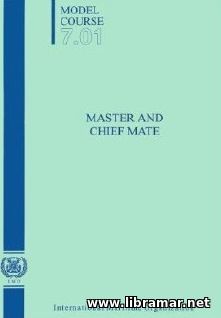 The present IMO model course is mainly intended for the ship officers willing to be certified and chief mate and master on vessels having a gross tonnage of five hundred tons or more. All entrants should have already completed a pre-requisite course on the minimum standards that is required for certification as the officer-in-charge of a navigational watch on the vessels of same size.
In contrast to this Model Course 7.03, the present course is covering the navigation, cargo handling and controlling the operation of the vessel and people care not at the operation but at the management level. In general, the declared purpose of all IMO model courses is to help all training institutes together with their teaching staff to better introduce ad properly organize the new courses and also improve the existing materials.
Again, the Table A-II/2 of the STCW Convention is being referred. The background technical knowledge supporting the tasks, relevant duties and associated responsibilities are listed in the appropriate sections of the training program and are more or less similar to the Model Course 7.03; however there are some differences and you would better go through the contents of each publication to have a clear picture.
|






